April in the UK has been kind to gardeners, unusually warm and sunny, and now there is rain. I hope it’s springlike elsewhere, or nicely autumnal in the southern hemisphere.
Gardening is at least an antidote to lockdown, and my heartfelt wishes go to those of you without access to an outdoor space to be creative in. I hope that will change soon.
At this time of year, growth happens so readily and is so beautiful. Here I explain details of timing, succession planting (see my latest video on that), keeping pests off, propagating, no dig, how to pick leaf vegetables, and asparagus! I explain and illustrate all of this in my online courses. which are selling steadily to all parts of the world, thanks for your support.
polytunnel far end, tulips, Shumei 26th,

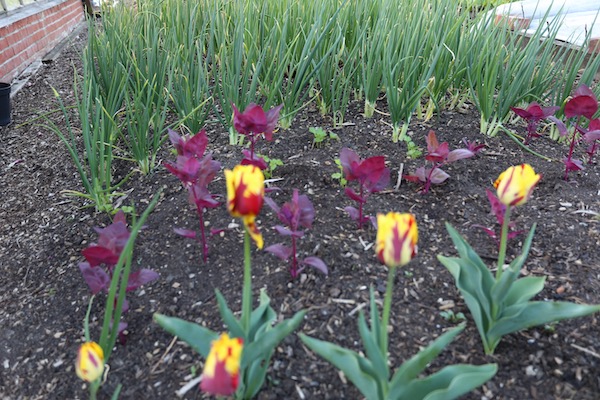
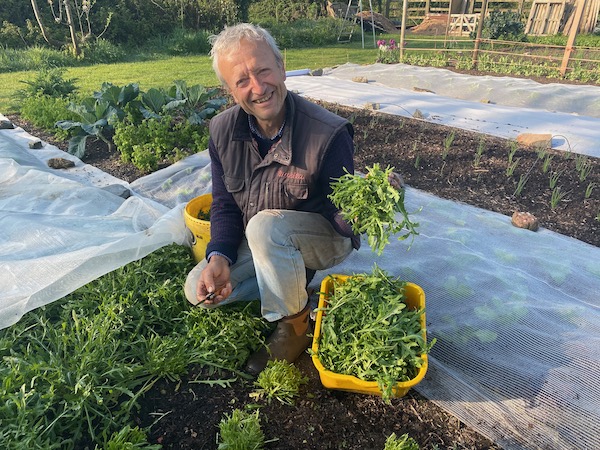
How to pick
In all the writing about grow your own, harvesting what you grow often receives brief descriptions. How you do it makes quite a difference to regrowth, see my ancient (2014!) video When to Pick. Also a recent one in the small garden, although its sounds is poor.
For leaf harvests, I generally do not cut. No dig, no knife! My favourite method ie to pinch or twist off outer leaves, for example of spinach below, so that the central leaves are undamaged and then regrow more quickly. An exception is wild rocket in the photo above, so many leaves and it regrows well when cut, not too low. Lots about this in online course 2.
For multi-sown roots, you can either pull whole clumps of say four plants (see video), or twist out the largest.
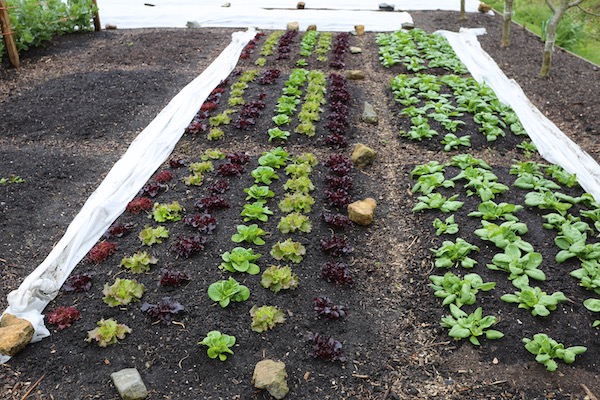


Watering, covers and growth after rain
When it’s dry, new transplants need water every three days or so, depending how hot and sunny it is. Just a small amount to their roots, not the whole area.
Maybe then once a week in weeks two and three. Until all being well, it rains.
Water and rain go through fleece (reemay) covers, except when they are new and shiny. Hopefully you can buy the thicker grade 30gsm or 1oz/yard, uv treated so it lasts several years. See my Links page for suppliers. This year we have used only one new length of fleece, because it’s good to reuse several times, mostly to keep wind off seedlings here. Also I am trialling cotton muslin (promising but expensive) and yes you can use old net curtains, mostly!
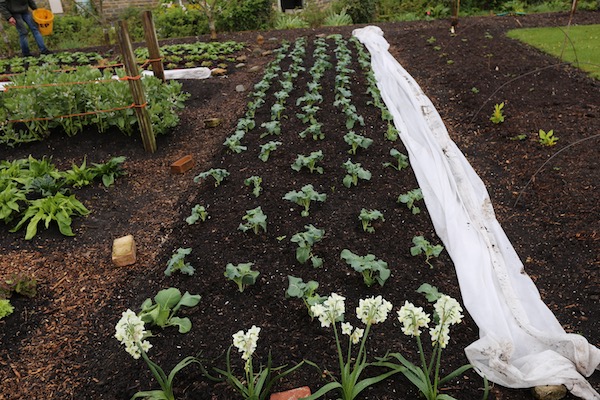
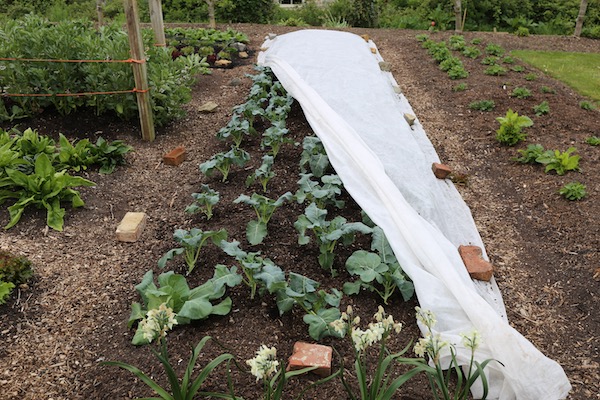
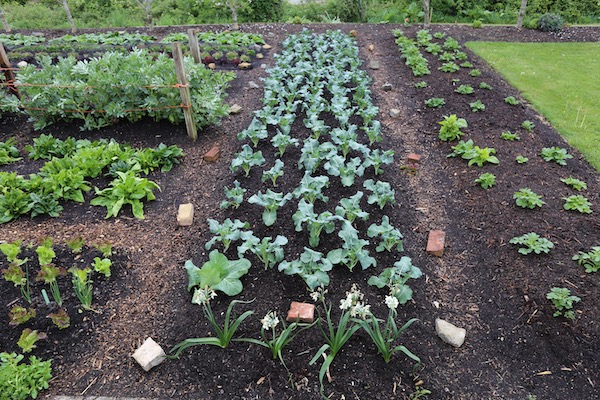
Fleece and rain
I removed many covers on 26th April before the recent rain. Not because rain won’t pass through, but it makes them heavier, and it’s now nice enough weather for crops to grow in open air.
I don’t use hoops for support except sometimes for lettuce, my only crop of significant value, and for fragile seedlings like onions, not always though. Seedling leaves are strong and fleece is light.
The last few broccoli are going to compost now, and we shall transplant peas for shoots, until planting lettuce in late June. No addition of compost until November.

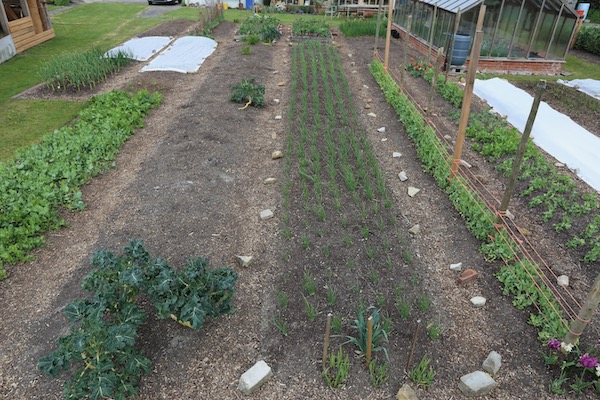
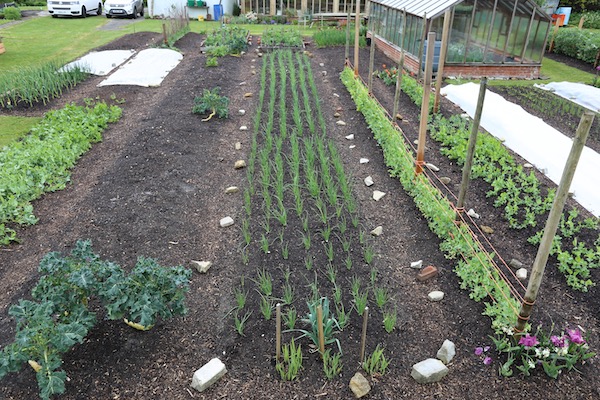
We also used hoops of 4mm wire for this bed of onion transplants, just in their first ten days or so. I had spare hoops, and it gave them more of a start. However the curved cover does shed some rain.
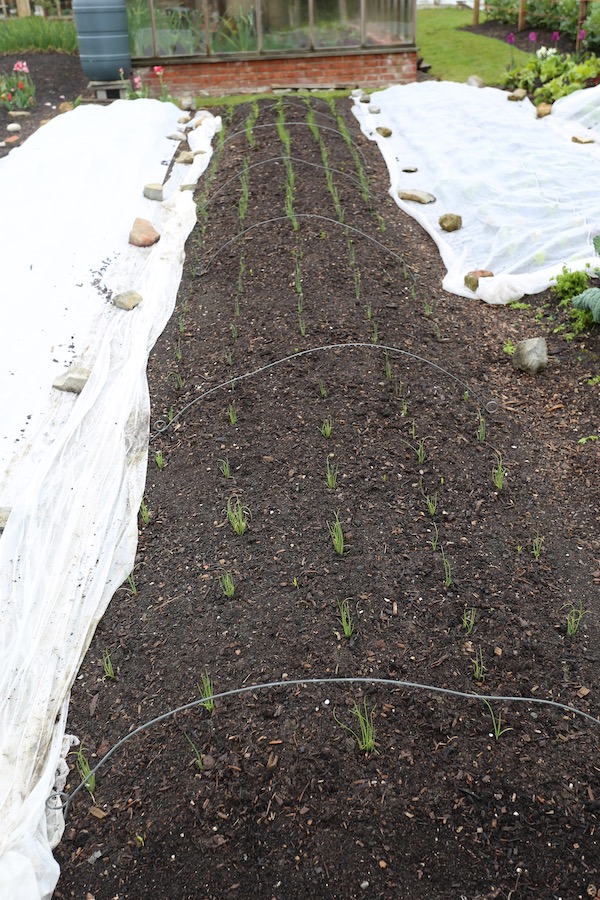
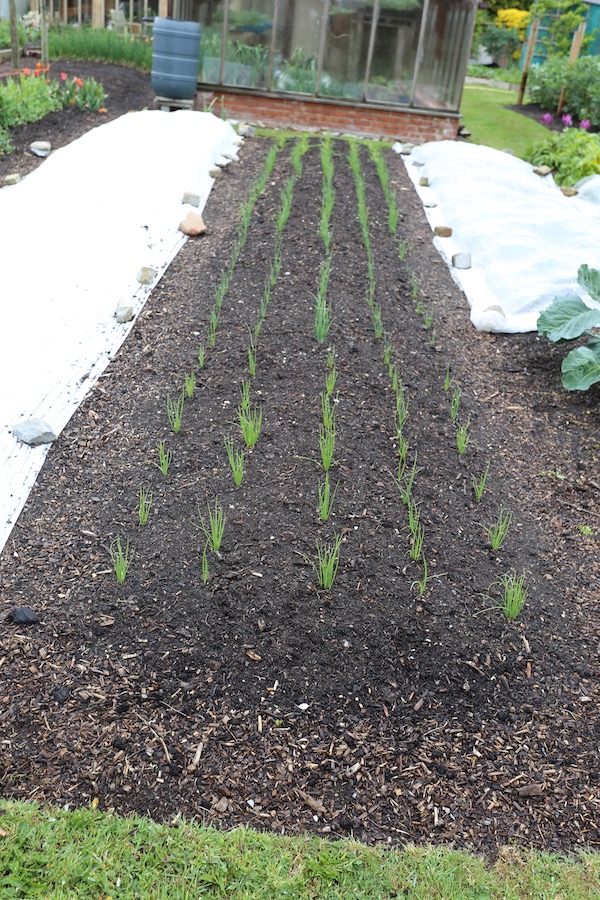
Pests
They are always with us, and a bad one in much of NW Europe currently is leatherjackets. These hungry larvae of craneflies love lettuce roots above all, also beetroot and spinach plus other vegetables. Favoured by the mild winter. We pull up damaged plants and find the larvae and squash or cut them.
For flea beetles the fine mesh is working well, see top photo and links. Mesh works best against insects, whereas fleece is less strong and you need only one hole for them to pile in, see below.
For birds check out bird netting. (I have no commercial interest in this)



Notice the flea beetle damage to radish under the fleece. Fleece keeps a lot of pests out, but it needs only one tear for flea beetles to be in there, and in happy protection too. However in this case I want the warmth for carrots, and the radish are mainly a helpful interplant! I have not thinned either the radish or carrot, managed to sow a good density without oversowing, just with finger and thumb.
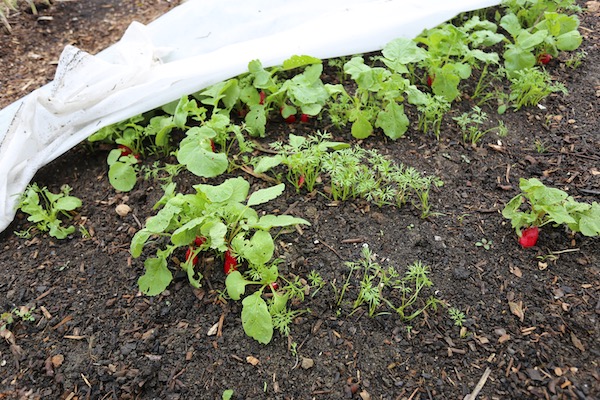
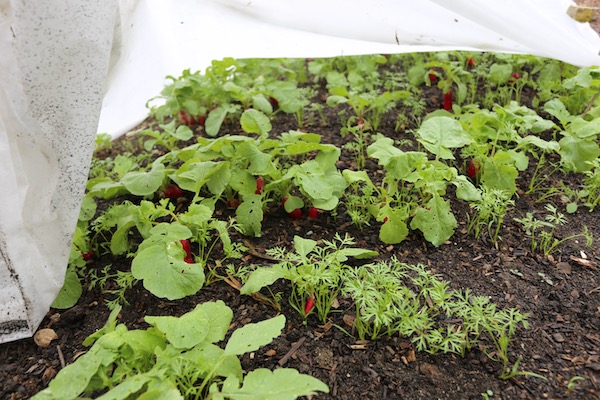
No dig
Thanks to all of you expressing interest in my work, and no dig is going well. The questioning-assumptions part of it is being acknowledged. During lockdown in Switzerland, they even made a song (about me more than no dig), you can listen here.
Above all we need to keep things simple. To quote an email I received from Rachel Pratt who had just completed online course 1:
Gardening, strangely, has become a scary subject. There is so much conflicting information out there that it’s easy to feel overwhelmed and give up. I nearly gave up our allotment and it was designed for the socially isolated of Derby, many of whom have a physical or neurological impairment. Your warm and relaxed approach has really helped me to find the confidence to try and make this work.
Growth in the comparison bed shows strong differences. Again it’s only the potatoes growing better on dig. First lettuce harvest was 0.91kg dig and 1.26kg no dig, spinach two weeks was o.07kg and 1.28kg respectively.



Start small
You don’t need a large space to grow a decent amount of food. Plus it’s more enjoyable to manage a small space well, than a large one haphazardly. One bed can grow a lot, and methodical is better than scattergun.
Nonetheless, there is always room for creativity and inspiration.
Don’t be hidebound by a plan, instead have ideas of possibilities. Feel your space around you and imagine what could be there, how it might work for you. Combine that with a few rough sketches.
For a planting plan, nothing beats knowing spacings and timings. Then you can improvise if need be. The bed below was spur of the moment, for a photoshoot of 17th March. Mostly transplants, with carrot and parsnip sown direct, all on that day, and early potatoes too. The pak choi and rocket afre full of flea beetle holes and I grew them for the photos, not because a good idea!
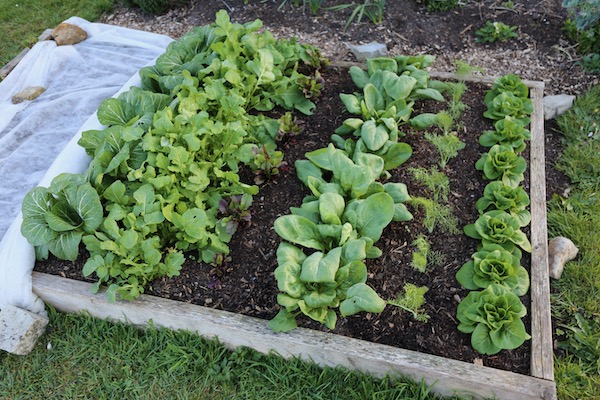
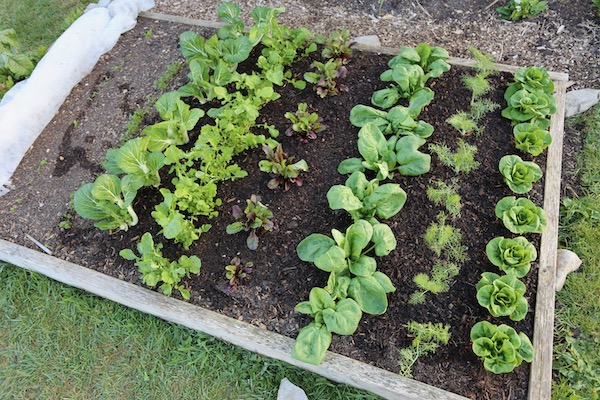
Plant raising
Check out my recent Instagram videos about this (not sure the link will work!) , also the three on You Tube. The sequence of 9 photo below is to show stages of growth.
Be around your seedlings as much as possible. For example in warm weather it’s good to water twice a day, unless you have capillary matting. It’s fine to wet leaves with overhead watering, and to water early each morning so seedlings are dry by nightfall, with less habitat for slugs and mildew.



Potting on and compost
Like so many things, this has been made daunting, but it’s very simple.
If plant leaves are yellowing, they are running low on food like the tomatoes below. Either transplant, or pot on, which means move to a larger container. Ideally wait until the module block or pot is filled with a fair amount of root in its compost. Or leaves are looking like the cucumbers in middle photo, quite strong.
My potting compost (potting soil in US) is 50% Morland Gold and 50% Dalefoot Wool, both organic approved and both of top nutrient status. Especially Morland Gold. See below for a really poor compost.
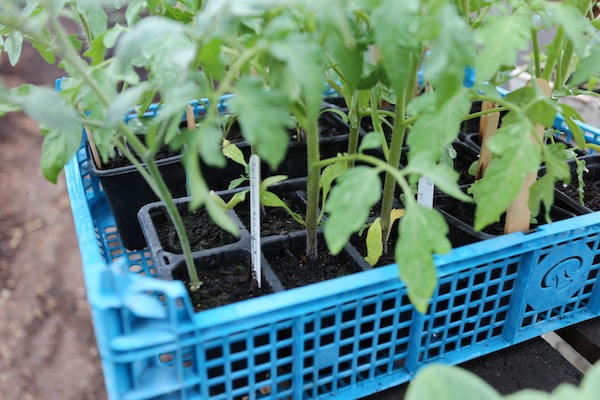
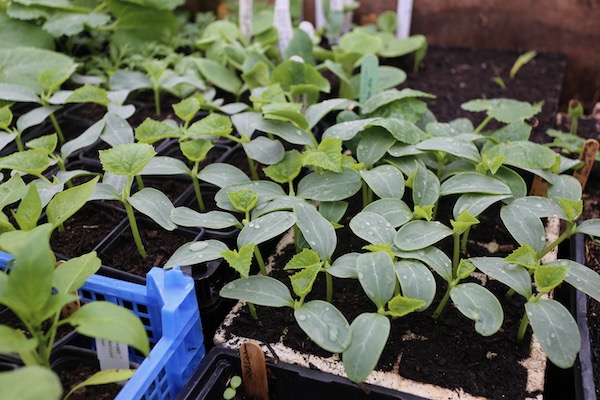
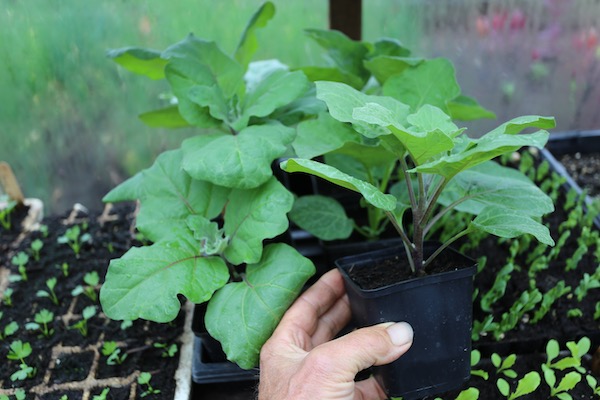
Warmth
Some heat is still useful to ensure rapid growth of warmth loving plants, like cucumber. See above, those plants are on the hotbed which is currently in the thirties C (86-102F) at its surface. We topped it up with two barrows of very fresh horse manure with straw.
This is ideal also to speed germination of new sowings. Soon I shall sow climbing and French beans for outdoor growing. And more sweetcorn, plus cucumbers for growing outdoors.
Also in early May it’s good to sow Brussels sprouts, autumn cabbage, perhaps more spring onions.
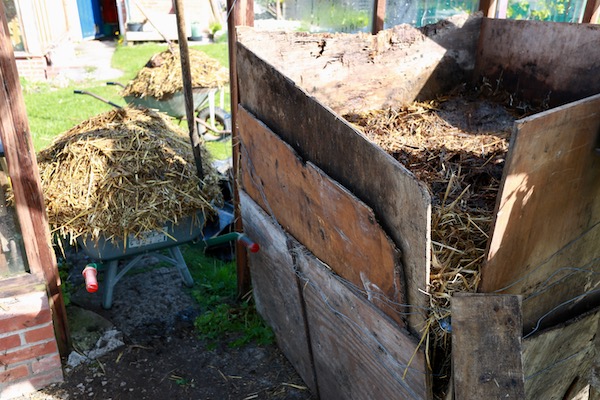

Seed and compost quality
I was sent photos of poor growth from Bord na Mona “Happy Compost”. The gardener is not happy. Looks like perhaps a lot of decomposing wood taking nutrients before roots can access any. Do email companies if this happens to you. There are a surprising number of improperly tested composts available to buy.
It’s a bit similar for seed. The photo is of two lots of one year old seed, still within sowing date as given on the packet. However without having two batches side by side, it’s harder to be sure that the seed is faulty.
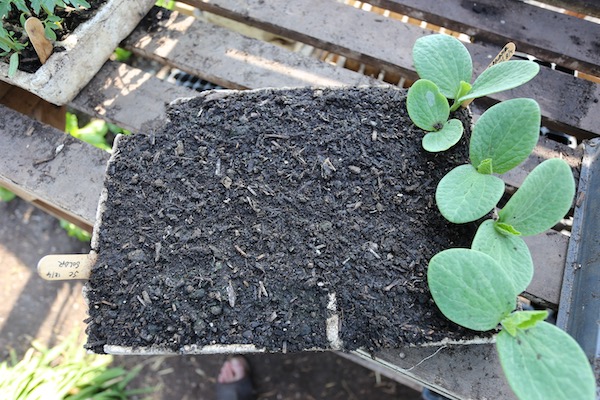

Asparagus
It’s picking season! The two months of tasty harvests, until solstice. I let spears grow quite long, then snap them off. For German readers, this is green not white asparagus!
For those who are creating new beds, the second photo shows how large a single crown can grow, after eight years. Give them space, at least 60cm or two feet.
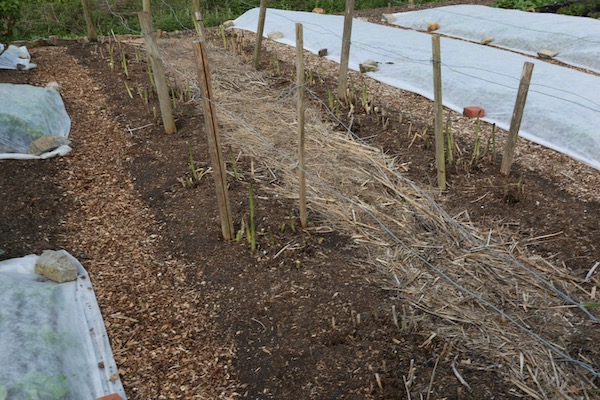
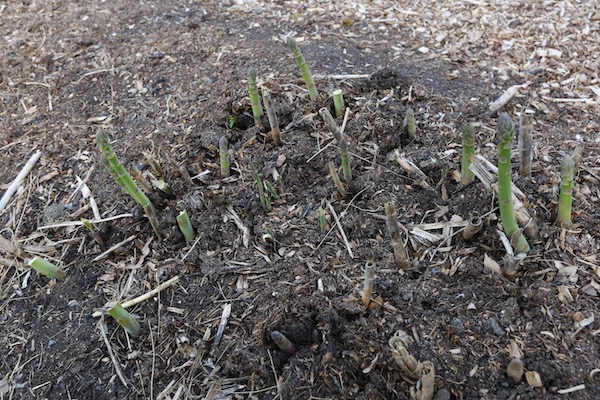
Clearing to replant
This is happening already, as with radish and some overwintered plants like chervil outside, and salads plus leaf vegetables in the polytunnel. Winter salads rise to flower through April. While Grenoble Red lettuce rises much later than that, can crop until early June. We twist them out when no longer needed, before they even flower.
After clearing we spread 3-5cm/1-2in compost, as soil food for the whole year, plantings of summer and winter. Organisms out of sight keep soil aerated and nourished, roots then find moisture and food.

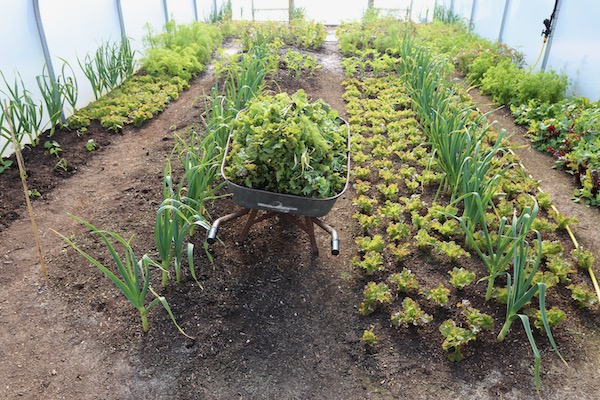
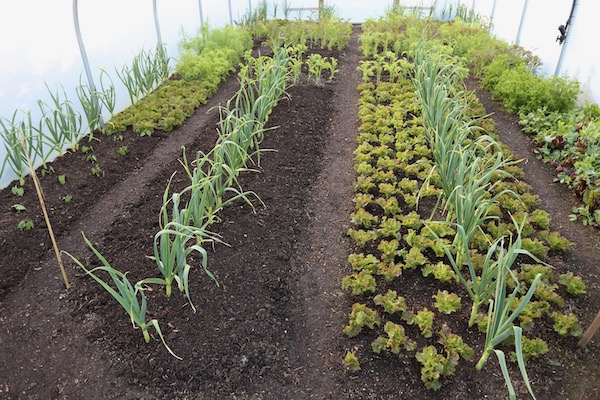
I am doing a little comparison in the greenhouse , of basil. Some went in a newly composted bed one week ago, as seedlings. Some we potted on as its space was not yet free and they are on the middle bed. Recent warmth helped both lots. The garlic went in as cloves on 14th October.
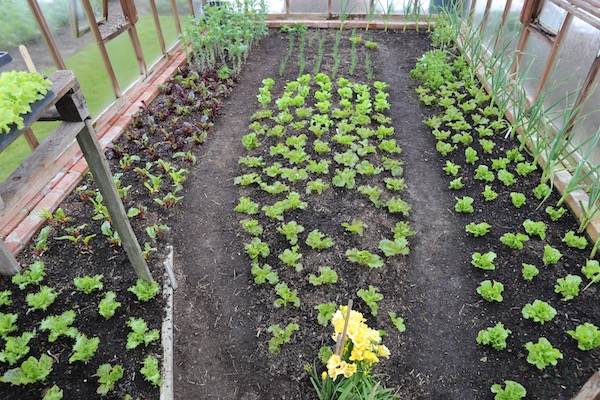
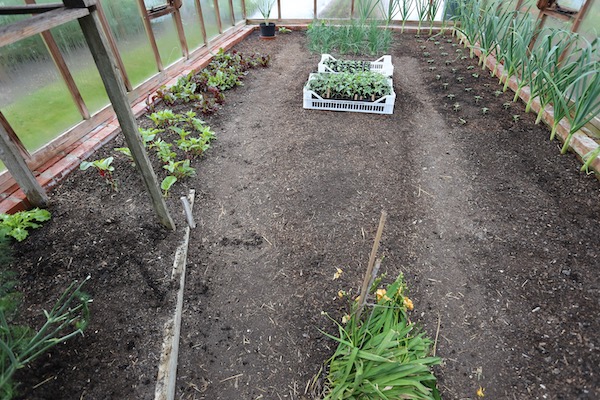
QUESTION AND ANSWER
See also my video Q/A on Which? Gardening Facebook page 30th April, submit Q by midday 30th.
From Andrew, module tray quality
I am constantly amazed how easily your small plants come out of modules. I am finding it difficult to release the plant from the base of the module even if I poke a small dibber up through the hole. When they do come free they often break up before I can get them in the ground. I think it may be my compost or the amount of water at the time of removal.
Charles replies, I am afraid that the world of trade is not run by gardeners! The trays you use are almost certainly “inserts” and are not fit for purpose. They are designed to break, so you need to buy more. As they break, plant roots are damaged. Best check the Links page on my website for suppliers of sturdy trays. Sadly there are not many choices.
David, potato harvesting no dig
How do you ensure that you pull up all the potatoes, not leaving any to seed the following year, without disturbing the compost too much?
Charles
There is unavoidable disturbance of the surface layer.
Potatoes are not so friendly to no dig but the tubers go less deep than in loosened soil,
Roots go deep down but potatoes cannot do that.
Cedric, planting in compost, again!
We live in the Lot in France and do not have much house compost so far as we have only been here for a few months. The dechetteries here give away free compost but I have been told it is “ strong “ so has to be mixed with soil . What would be your take on this and the no dig technique? Could it be used for beds as it is or would it have to mixed with something else.
Charles
I often read expressions of worry, over using different composts according to the stage of growth. Even compost manufacturers baulk at seedlings growing in their richest composts – hence the category called “seed composts”, with fewer nutrients than potting composts.
For example the director of a company which sells “double strength” compost advised me not to sow seeds in it. I did, they germinated fine and then grew strongly.
I have sown and pricked out into Levingtons MP3, just to see… it’s one of the most nutrient-rich composts available. Seeds and seedlings grew fine, just as they do in cow and horse manure, which is often claimed to “burn seedlings”.
This might happen if the manure were fresh from the animal, but no sensible gardener would use such a manure. The “burn seedlings” claim puts a lot of people off using great compost! And even pushes them to use mixes with soil in, which results in weaker plants and more weed growth
Levi, bed prep complications
Considering that a claim in favor of cultivating is that it allows for quick crop turnover and good root integration (into the soil), are their certain crops that are harder to follow quickly with another sowing? I saw your video where you follow onion with leeks and kohlrabi with something, and it looked fairly easy, but for the plants with deeper root systems or big tap roots like Beans, winter squash, corn and watermelon, do you ever have trouble getting out enough roots and preparing the bed for immediate sowing?
Charles
You are making an assumption! Actually, I aim to leave most roots in the soil, from any preceding crop. Twist out broccoli stems and lettuce, or cut at the base for broad beans etc.
No dig allows for quick crop turnover and good root establishment. We find rapid establishment of second plantings in undisturbed soil.
It is so much quicker and easier than with digging and raking. I am amazed how people have been convinced of the supposed need to do it all. “Roots need loose soil” is not true.
Janice, soil grubs
I read your no dig gardening but I suffer with having large chafer grubs every year eating the roots of some of my veg and feel I need to dig deep to remove them
Charles
Soil grubs are horrible and I have leatherjackets this spring, after the mild winter.
I am not convinced that digging helps, as you are indeed finding, dig every year.
With no dig they are to some extent protected down there, but so also are other organisms which eat them (beetles I believe) are not disturbed.
My experience with the dig/no dig beds shows more damage from wireworms, and overall, on the dug bed, compared to same plantings on no dig.
Plus all the other benefits like fewer weeds.








































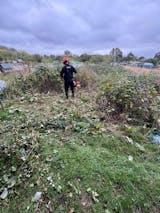
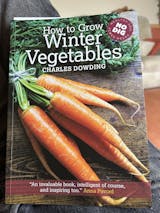


0 comments